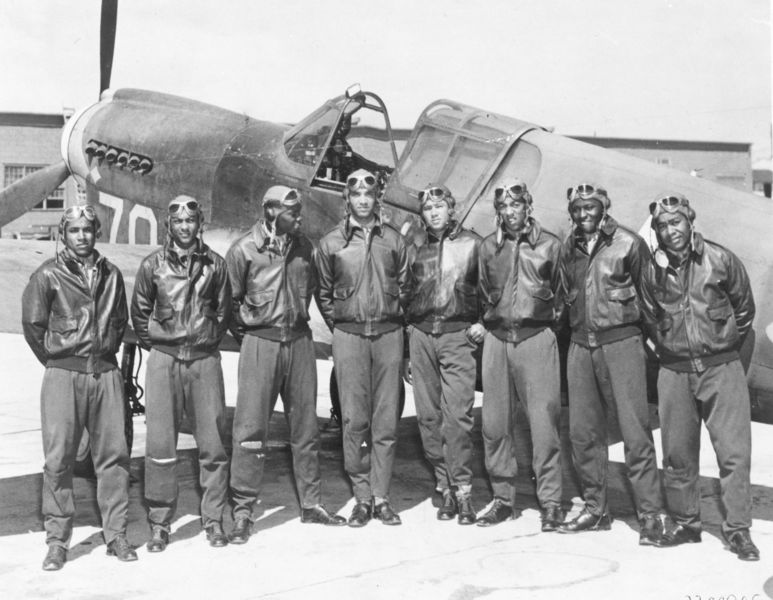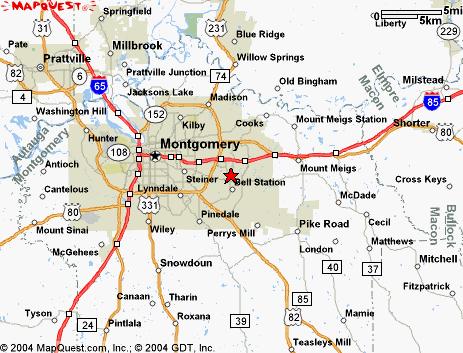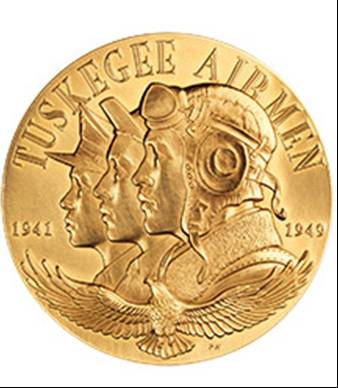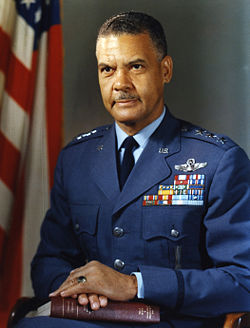

Prior to the Tuskegee Airmen, no U.S. military pilots had been
African American. A series of legislative moves by the United States
Congress in 1941 forced the Army Air Corps to form an all-black
combat unit, despite the War Department's reluctance. In an effort
to eliminate the unit before it could begin, the War Department set
up a system to accept only those with a level of flight experience or
higher education that they expected would be hard to fill. This policy
backfired when the Air Corps received an abundance of applications
from men who qualified even under these restrictive specifications,
many of whom had already participated in the Civilian Pilot Training
Program, which the historically-black Tuskegee Institute had
participated in since 1939.
 The U.S. Army Air Corps had established the Psychological Research
Unit 1 at Maxwell Army Air Field, Montgomery, Alabama, and other
units around the country for aviation cadet training, which included
the identification, selection, education, and training of pilots,
navigators and bombardiers. Psychologists employed in these research
studies and training programs used some of the first standardized
tests to quantify IQ, dexterity, and leadership qualities in order to
select and train the right personnel for the right role
(bombardier, pilot, navigator). The Air Corps determined that the same
existing programs would be used for all units, including all-black
units. At Tuskegee, this effort would continue with the selection and
training of the Tuskegee Airmen.
The U.S. Army Air Corps had established the Psychological Research
Unit 1 at Maxwell Army Air Field, Montgomery, Alabama, and other
units around the country for aviation cadet training, which included
the identification, selection, education, and training of pilots,
navigators and bombardiers. Psychologists employed in these research
studies and training programs used some of the first standardized
tests to quantify IQ, dexterity, and leadership qualities in order to
select and train the right personnel for the right role
(bombardier, pilot, navigator). The Air Corps determined that the same
existing programs would be used for all units, including all-black
units. At Tuskegee, this effort would continue with the selection and
training of the Tuskegee Airmen.
 Strict racial segregation in the U.S. Army required the development of
separate African American flight surgeons to support the operations
and training of the Tuskegee Airmen.[3] Prior to the development of
this unit, all U.S. Army flight surgeons were white. Training of
African American men as aviation medical examiners was conducted
through correspondence courses until 1943 when two black physicians
were admitted to the U.S. Army’s School of Aviation Medicine at
Randolph Field, Texas. This was one of the earliest racially
integrated courses in the U.S. Army. Seventeen flight surgeons
served with Tuskegee Airmen from 1941 through 1949. At that time,
the typical tour of duty for a U.S. Army flight surgeon was four years. Six of these physicians lived under field conditions during operations in North Africa, Sicily and Italy. The chief flight surgeon to the Tuskegee Airmen was Vance H. Marchbanks, Jr., M.D., a boyhood friend of Benjamin O. Davis, Jr.
Strict racial segregation in the U.S. Army required the development of
separate African American flight surgeons to support the operations
and training of the Tuskegee Airmen.[3] Prior to the development of
this unit, all U.S. Army flight surgeons were white. Training of
African American men as aviation medical examiners was conducted
through correspondence courses until 1943 when two black physicians
were admitted to the U.S. Army’s School of Aviation Medicine at
Randolph Field, Texas. This was one of the earliest racially
integrated courses in the U.S. Army. Seventeen flight surgeons
served with Tuskegee Airmen from 1941 through 1949. At that time,
the typical tour of duty for a U.S. Army flight surgeon was four years. Six of these physicians lived under field conditions during operations in North Africa, Sicily and Italy. The chief flight surgeon to the Tuskegee Airmen was Vance H. Marchbanks, Jr., M.D., a boyhood friend of Benjamin O. Davis, Jr.

The Tuskegee Airmen were young men who became America's first black military men. The Tuskegee Airmen were trained at Tuskegee Army Air Force[TAAF] in Tuskegee,Alabama. The first class was in 1941 with only 13 men and 5 five completed training. From 1941-1946 994 men graduated from[TAAF]. Four-hundred-fifty pilots served over seas. World War II was accomplished great and remembered Tuskegee Airmen.After going through war, the Tuskegee Airmen still faced racism. In 1946 TAAF started training women. Even though the Tuskegee Airmen faced bad criticism after World War II their atitude was great. They still had to complete their task!!!!!!!


{ Vance Hunter Marchbanks Jr.was the cheif flight surgeon for the Tuskegee Airmen}.

{ General Benjamin Oliver Davis, Jr. (December 18, 1912 – July 4, 2002) was a United States Air Force general and commander of the World War II Tuskegee Airmen.}